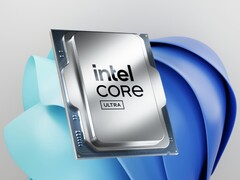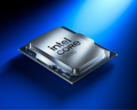Intel is reportedly developing a follow-up to the Core Ultra 200 Arrow Lake CPU architecture. While not a complete redesign with considerable changes, the Arrow Lake Refresh CPU architecture that is expected to land in a few months will see some notable enhancements, according to a new leak put out by Moore’s Law Is Dead.
Previously, MLID had claimed that Arrow Lake Refresh chips feature the same core count as the first-gen Arrow Lake products, with increased clock speeds and the new NPU4 being the only major improvements. Information that later popped up denied the inclusion of the NPU4. MLID now suggests that, while there will be no new NPU in Arrow Lake Refresh chips, there will be a few noteworthy tweaks.
First up, the leaker reiterates his claim of increased clock speeds for Arrow Lake Refresh CPUs without divulging any specific number. That said, MLID suspects the boost clocks of Arrow Lake Refresh CPUs could hit 6 GHz, but won’t go near the 7 GHz mark that has been claimed for AMD Zen 6 chips.
Interestingly, MLID suggests that Intel is also upping the clock frequencies of the Ring Bus on Arrow Lake Refresh products. A Ring Bus connects together different parts of a CPU, like the cores, L3 cache, and I/O. Sort of like a highway, the Ring Bus allows seamless data transfer between different components. The higher the Ring Bus clock, the higher the data transfer rate. But pushing the Ring Bus voltage too high can cause system instability, which is exactly what happened with the 13th and 14th-gen Intel CPUs.
Per MLID, Intel reportedly clocked the Ring Bus on the vanilla Arrow Lake CPUs lower to avoid any potential instability issues. This could’ve cost Arrow Lake CPUs some performance, which is why Intel is said to increase the Ring Bus clocks in the upcoming Core Ultra 200 processors.
In addition to an increased Ring Bus frequency, Intel is allegedly boosting the die-to-die clock speed as well. The die-to-die interconnect, as the name suggests, connects different silicon dies on a single CPU package together. Increasing the clock speed at which this interconnect operates could, therefore, result in faster data transmission between the different dies.
Intel Arrow Lake Refresh gaming performance
MLID reports that, with the enhancements listed above, the Intel Arrow Lake Refresh CPUs will see a 7-10% gaming performance improvement over the current Arrow Lake chips. While a respectable performance gain for a minor architectural refresh, the 10% improvement won’t be enough to dethrone AMD’s Zen5X3D CPUs. For instance, the Ryzen 7 9800X3D appeared around 40% faster than the Core Ultra 9 285K in gaming in our review.
Long story short, the Intel Arrow Lake Refresh CPUs are looking a bit better than previously rumored. We’ll have to wait for the official launch to see the final performance of the CPUs to determine whether refreshing Arrow Lake was a good move by Intel. Till then, take the information with a grain of salt.
Source(s)
Moore's Law Is Dead on YouTube, Teaser image: Intel, Philip Oroni on Unsplash, edited













